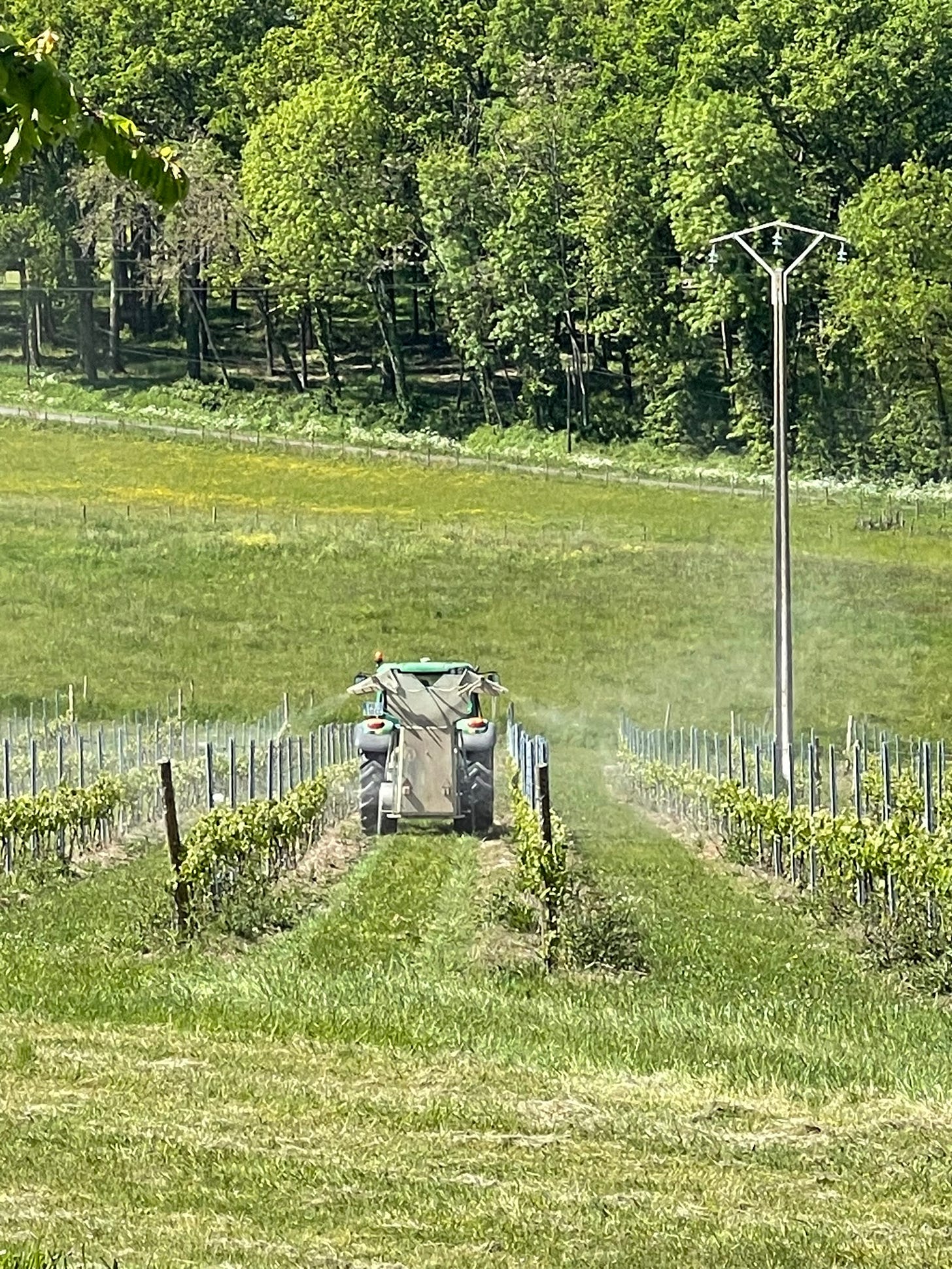Between the wide, lazy Garonne and Dordogne Rivers, about an hour’s drive from Bordeaux, lies some of the world’s most valuable farmland. And some of the world’s most anxious farmers.
The land features bright green rolling hills basking in a warm spring afternoon sun nurturing a precious crop of immaculately maintained vines.
The vines produce grapes with household names like merlot, semillion, chardonnay and of course cabernet sauvignon.
Vineyard workers bundled against the morning chill carefully work the fields laying hands, if only briefly, on nearly every bunch of grapes. The workers speak of the vines as if they were old friends. They “don’t like to get wet” or “have their feet (roots) chilled” or “get bruised” they say.
“It is terribly hard work, and you never know what your labor will produce,” said Charlotte Laurent of Chateau Martet, a small but popular winery about seven miles from Pellegrue. “But it is all so worth it when you taste the result.”
Like many fellow growers, Laurent has experienced some sleepless nights this week, with more to come.

Weather is everything this time of year, says grower Caro Feely who came to France from her native South Africa 30 years ago to “have a look” and is now owner of Chateau Feely, near Saussignac, one of the most respected fully organic wineries in the world.
“Once the buds come out, we want totally bland weather,” Feely said. “No rain, only a little wind and definitely no frost! To tell the truth, we are a little scared right now.”
And winemakers do not scare easily. A lot goes into a premium bottle of wine which means a lot can go wrong.
The last few nights have not been reassuring with temperatures just before dawn dipping down into the teens. Fortunately, the frost has not settled in, quickly melting under the first rays of the morning sun.
But the weather forecast is cautionary with temperatures expected to dip even further through the middle of next week.
None of this anxiety is new to the wine makers. As recently as 2011 a warm winter combined with a cold spring, resulting in one of France’s smallest harvests in 30 years. And that’s a problem because buyers will simply go someplace else. Winning them back in better times is not guaranteed.
While the fate of this year’s crop will not be known for several more weeks (frost can occur in the Bordeaux region well into May) growers do know that a variety of factors – many of them the direct result of climate change – resulted in last year’s (2023) harvest being the lowest since 1961.
Interestingly, cooler temperatures and heavy winter rains in the Sonoma and Napa regions of California are expected to result in a 12 percent increase in U.S. wine production this year. That increase, of course, comes after years of devastating drought.
The worst frost ever recorded was in April 1956. Temperatures dropped to minus 20 Celsius, (minus four degrees Fahrenheit) and stayed there for several nights, destroying the harvest across France. The cold not only killed the buds and the budding grapes, but it also killed the vines.
Weather forecasters, who are doing hourly updates on local radio and TV stations, do not see anything approaching the frost disaster of 1956 occuring in the next six weeks. But that’s little comfort for winegrowers whose immediate futures hang in the balance.
I’ll check in next week with a frost update.
Editor’s Note: Please note that my new e-mail address (it’s a long and boring story!) is now: bobwynnepr@gmail.com
And for those of you who are interested in trying some really nice wines made by some really nice people:
Chateau Martet can be reached at https://www.chateaumartet.com/
Chateau Feely can be reached at https://chateaufeely.com/fr/






It’s a cliffhanger! Waiting for the next installment!